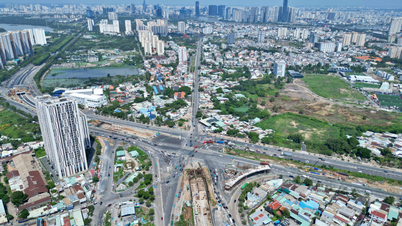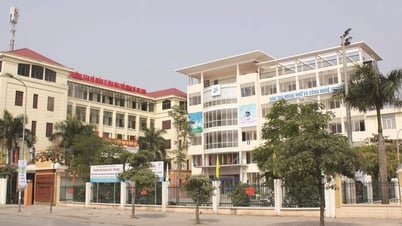Typhoon Tra Mi hits the Philippines.
However, regional forecasters warned of a rare chance that the storm could be pushed back towards the Philippines early next week, as it is pushed back by high-pressure winds in the South China Sea. Tra Mi is the 11th and one of the costliest storms to hit the Philippines this year.
At least 82 people have died in the storm, floods and landslides, with 49 deaths reported in recent days. Another 11 people remain missing in Batangas.
According to updated information as of the afternoon of October 25 (local time), the storm is located 410 km west of Ilocos Sur province, northwest of the Philippines, with sustained winds of up to 95 km/h, and gusts of up to 115 km/h. The storm is moving northwest at a speed of 30 km/h towards Vietnam, and is expected to make landfall from October 27 if it maintains its current track.

Typhoon Tra Mi caused heavy damage in the Philippines. (Photo: Reuters)
Philippine President Ferdinand Marcos discussed the possibility of a typhoon returning to the Philippines during an emergency meeting with cabinet members and disaster response officials on October 25.
Accordingly, the Philippine government forecaster told him that Tra Mi could turn west of the Philippines early next week, but it is likely to head away from the Philippines again without making landfall.
However, Mr. Marcos is still concerned that the storm will cause damage even without making landfall, given the fact that heavy rains have been falling continuously in recent days. In addition, another storm forming in the Pacific Ocean could once again threaten the country.
The possibility of Tra Mi turning around has also attracted the attention of weather experts from other countries in Asia, including Japan, which is providing information to the Philippines to help track the storm.
Of the 82 people killed by the storm, 26 were villagers killed by floods and landslides in Bicol, a farming and tourist region southeast of Manila. The region is known for Mayon, one of the country’s 24 most active volcanoes, which is a nearly perfect cone.
At least 27 people remain missing in several provinces, including 17 in Batangas.
Although Tra Mi did not strengthen into a super typhoon, it caused unusually heavy rains in some areas, with one to two months' worth of rain falling in just 24 hours.
Source: https://vtcnews.vn/khien-82-nguoi-philippines-thiet-mang-bao-tra-mi-de-doa-quay-dau-tro-lai-ar903888.html



![[Photo] Ready for the top competitions of Vietnamese table tennis](https://vphoto.vietnam.vn/thumb/1200x675/vietnam/resource/IMAGE/2025/5/18/9c547c497c5a4ade8f98c8e7d44f5a41)

![[Photo] General Secretary To Lam visits exhibition of achievements in private economic development](https://vphoto.vietnam.vn/thumb/1200x675/vietnam/resource/IMAGE/2025/5/18/1809dc545f214a86911fe2d2d0fde2e8)































![[Photo] National conference to disseminate and implement Resolution No. 66-NQ/TW and Resolution No. 68-NQ/TW of the Politburo](https://vphoto.vietnam.vn/thumb/1200x675/vietnam/resource/IMAGE/2025/5/18/adf666b9303a4213998b395b05234b6a)















































![[Podcast] - War Scars](https://vphoto.vietnam.vn/thumb/402x226/vietnam/resource/IMAGE/2025/5/18/9a131452559b41c9be4dc3798d0a4da0)











Comment (0)